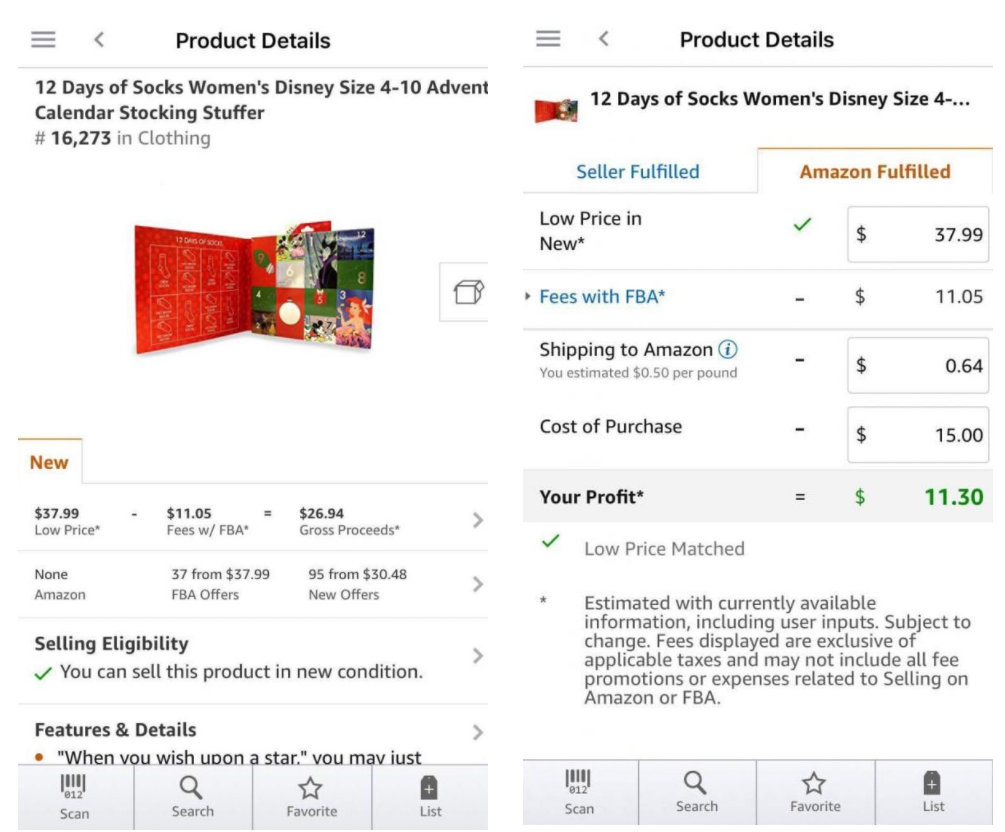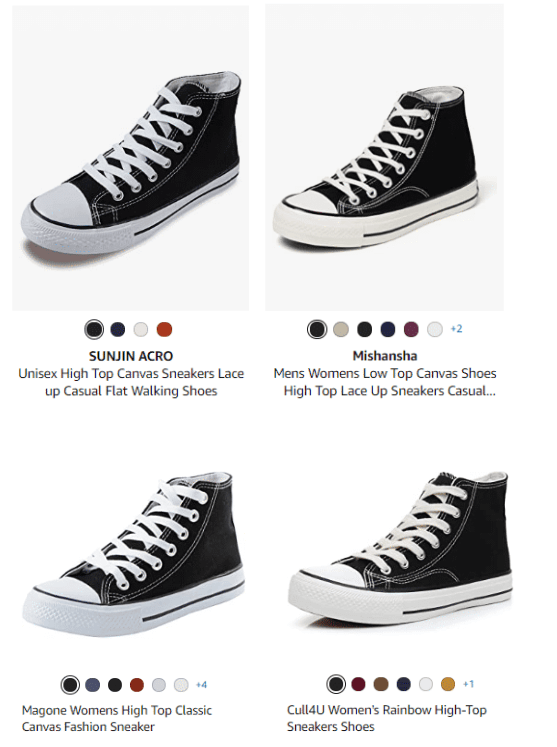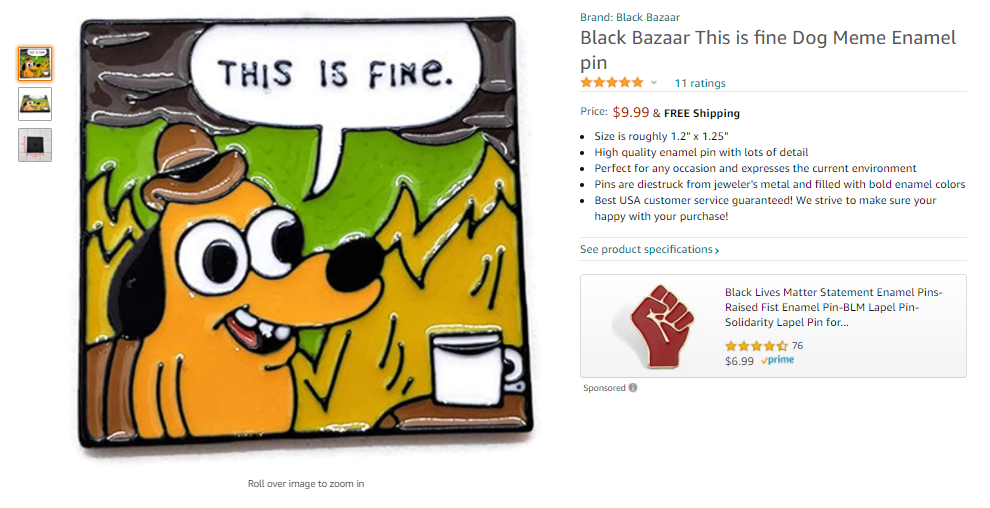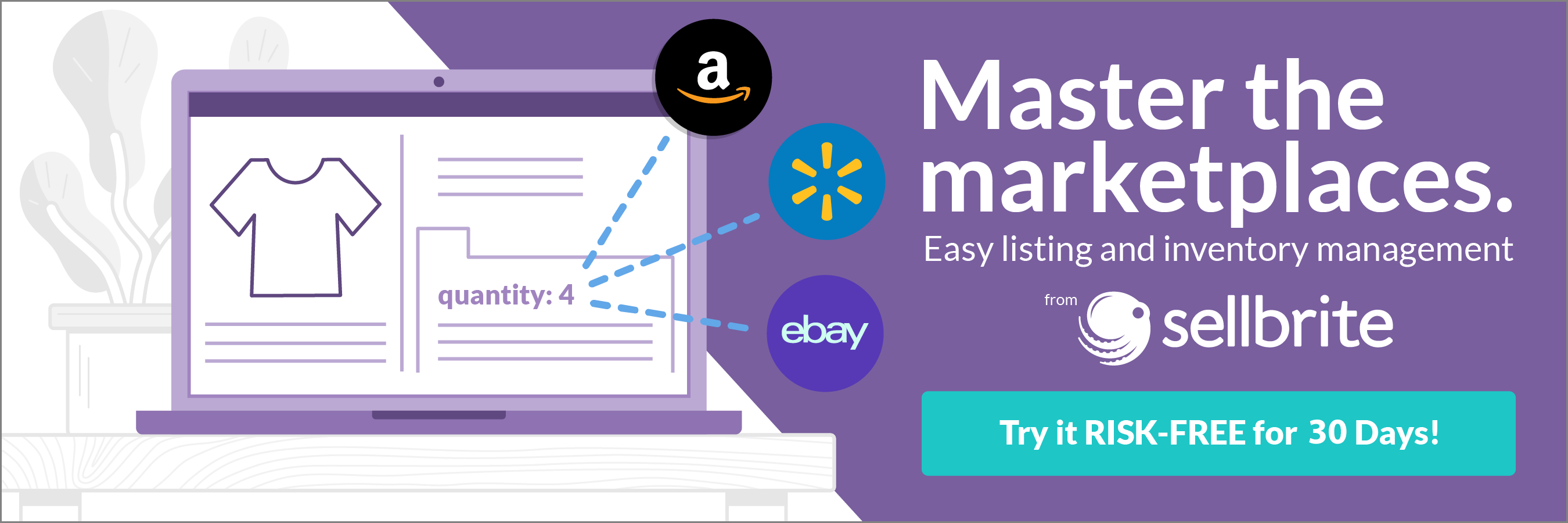Think you have no chance of success on Amazon if you don’t run a full-time business? Good news: Over half of Amazon sellers run their business part-time—and 37% have full-time jobs.
Maybe you want to build an online store that eventually frees you from your 9–5. Maybe you could really use a second income right now. Whatever your goal, the Amazon marketplace offers several great opportunities to build a side business.
The trick to running an Amazon side hustle is choosing the right business model. There are various ways to run a side business on Amazon—some are cheaper and easier to start, while others offer more long-term potential. The only way to know which model is “best” for you is to consider:
- Your goal for your side hustle (second income or long-term business?)
- Your ability to invest (how much time and money can you put into the business up front?)
- Your ongoing commitment (how much effort are you willing to put into this weekly?)
To help you figure out what model is best for you, we’re going to look at the three best Amazon side hustles. We’ll evaluate each based on the above criteria—desired outcome, starting costs, upfront work, and ongoing management—so you know what you’re up against and can choose the best course of action for your situation.
If you want to start with the strategy of how to run an ecommerce side hustle, check out our guide: How to Run a Successful Ecommerce Business On the Side.
The retail arbitrage Amazon side hustle
Retail arbitrage is one of the most popular online side hustles. It involves buying products on sale in stores and reselling them online for a profit.
Sellers who go the retail arbitrage route spend their time browsing physical stores (often big-box retailers like Walmart or Target) looking for deals that can translate into profit. Let’s say your local Walmart puts a lot of toys on clearance after Christmas to make room for new Disney merchandise. As a retail arbitrage seller, you can buy these toys for a fraction of what they’re worth and sell them on Amazon for a profit.
To assess products’ value in retail stores, sellers can use the Amazon Seller app (and potentially a similar third-party tool) to analyze product competition and potential while on the go.

20% of Amazon sellers use the retail arbitrage model.
Pros of retail arbitrage
Retail arbitrage is the easiest Amazon side hustle. The big advantages here are:
- Low barriers to entry. Anyone can use this model. You don’t have to form supplier relationships or create a brand since you’ll be reselling other brands’ products. You don’t need much storage space since you control your inventory size. And with Fulfillment by Amazon (FBA), you can even outsource the job of shipping and handling.
- Low startup costs. Except for Amazon seller fees and shipping, the only upfront costs are your inventory (and you’re in charge of how much you want to buy). You can turn a profit with as little as a hundred bucks in some cases.
- Fast profits. You don’t have to invest in large quantities of inventory that would take time to pay off. An arbitrage model gives you the flexibility to quickly capture demand and turn a quick profit.
Cons of retail arbitrage
The same factors that make retail arbitrage easy can also make it unreliable. The main disadvantages are:
- Very little control over your business. You can’t predict what retailers will have on discount—sometimes you just won’t be able to find items with good profit potential. Added to this, Amazon has brand protection measures—like gated categories and brands or requiring supplier invoices—that can interfere with resellers’ businesses.
- Time-consuming. Sourcing products is highly inefficient with retail arbitrage. You’ll have to do a lot of research during each inventory trip you make since you can’t know what you’ll find ahead of time.
- Steep competition. Chances are you’re not the only one reselling a product. When you sell the same product as someone else, you share a product listing and have to compete for the Buy Box (the default purchase option on Amazon). In some cases, you’ll even have to compete with the original brand manufacturer. Since this competition is based primarily on price, it’s easy to get locked in a race to the bottom.
Should you try this Amazon side hustle?
The verdict: If you’re looking for the ideal weekend side hustle on Amazon, this is it.
Retail arbitrage requires minimal time and money investments compared to other models, so it’s easy to fit in between other commitments. You can go shopping for inventory when you feel like it or when you’re already at a retailer. And for those who already love to shop, this sourcing process can be a lot of fun as well.
While there’s always some risk when you’re reselling someone else’s product, you can generally turn a decent profit as long as you do your product research. And with Amazon FBA, you can easily outsource most of the work of shipping and handling.
But if you’re looking for a scalable, long-term Amazon side hustle that reliably provides income, retail arbitrage presents a lot of challenges. While some people work hard and create regular income with this model, its fundamental uncertainty makes retail arbitrage difficult to scale.
Getting started with retail arbitrage
The key to success with retail arbitrage is doing your homework when buying products and running your side hustle like a professional business. That means tracking business expenses (like gas and packing tape), procuring a resale certificate, and monitoring revenue and profits.
Thinking about giving retail arbitrage a shot? Make sure you read these resources first to get the full picture:
- The New Seller’s Guide to Retail Arbitrage on Amazon
- The Resellers Guide to Resale Certificates
- 5 Places for Local Product Sourcing
The wholesale Amazon side hustle
The wholesale business model involves buying a manufacturer’s items in bulk and reselling them on Amazon. You’ll purchase products either from a wholesale supplier or directly from the manufacturer.
Like retail arbitrage, you’re reselling another brand’s product. The main difference here is that you purchase a much larger inventory from authorized distributors. This kind of consistent stock will help you drive more consistent sales.
Your reliability and reputation as a seller will depend heavily on your supplier. The linchpin for this Amazon side hustle is finding and building a relationship with a wholesale manufacturer or distributor who can provide you with quality goods in a timely manner. Thorough product research is especially critical since you have to invest upfront to secure the larger inventory required.
26% percent of Amazon sellers use a wholesale model, making it the second most popular business model on the marketplace.
Pros of wholesale selling
The wholesale business model provides a few key advantages when it comes to starting an Amazon side hustle:
- A scalable, profitable business model. According to Jungle Scout, 57% of wholesalers on Amazon were able to turn a profit in under three months. And because you’re able to analyze products in advance and purchase larger inventories, it’s easier to scale your business over time.
- A secure way to resell. When you buy inventory from manufacturers or authorized suppliers, you usually have an easier time getting access to gated categories. You can also protect yourself against counterfeit claims since suppliers often provide documentation to verify product authenticity.
- Efficient product sourcing. There are many great websites that can help you choose wholesale products to sell on Amazon. Sourcing items through suppliers is more efficient than arbitrage since you have access to more products and more opportunity to research and pick your products (vs. just grabbing what a retailer has on sale).
Cons of wholesale selling
The wholesale model does, however, come with more risks and challenges than a retail arbitrage business:
- High competition. As with retail arbitrage, when you resell someone else’s product, you’re competing for the Buy Box. If you sell a product with steep competition, it will be difficult to stand out to buyers on the product page and turn a profit.
- Upfront investment in inventory required. Most suppliers have a minimum order quantity (MOQ), which locks you into a certain number of units. Because of this requirement, you have to shoulder some risk. If you buy 100 units of a product you can’t sell, you’re on the hook for that inventory.
- Difficulty finding a good supplier. Your supplier will make or break your business. Finding a supplier that’s affordable, reliable, and high-quality can be a challenge, especially if you’re looking at overseas suppliers.
Should you try this Amazon side hustle?
The verdict: Wholesaling is a great “middle-of-the-road” side hustle for someone who wants a more steady, scalable part-time income.
The wholesale side hustle is a level up from retail arbitrage. There’s a lot more upfront work and cost involved. Dealing with suppliers adds an extra layer of research and risk, but you also have higher potential for long-term rewards.
Once you get your bearings and establish solid supplier relationships, you’ll have opportunities to cut down on some of the hands-on work. If you use Amazon FBA, for example, you can have your supplier ship products directly to Amazon warehouses.
Willing and able to take on some risk and put in the effort to build relationships with suppliers? Wholesale is an Amazon side hustle that you can start on your weekends but eventually scale into a decent income.
57% of wholesalers on Amazon turn a profit in under three months
Getting started with wholesale
If you’re going to start a wholesale side business, go above and beyond when it comes to researching products, competition, and suppliers. Look for suppliers who will let you buy sample products and test the quality before committing to large shipments. Consider investing in a product research tool (like Jungle Scout) and supplier directory (like SaleHoo).
It will take more time and effort than making a run to the Target clearance section, but scalable Amazon side hustles require bigger investments.
Want to learn more about selling wholesale on Amazon? These resources will help you get started:
- How to Choose Wholesale Products to Sell on Amazon
- The Essential Guide To Product Procurement
- Spotting a Wholesale Supplier Scam
The private label Amazon side hustle
Private label is very similar to wholesale, except that instead of selling another manufacturer’s products, you’re selling a product with your own branding.
There are two avenues with this model: rebranding generic products or manufacturing a new product.
Many private label sellers buy generic items from wholesale distributors. This differs from the wholesale model because, instead of reselling Converse sneakers, you’re selling a generic high-top sneaker under your own brand (as in the example below). Some sellers don’t even affix a brand label to the product itself.

(Source)
The private label model also applies if you manufacture your own product. For example, let’s say you want to sell collectible enamel pins. You design the pin and outsource production to a company like WizardPins. The product is unique to you, and you sell it under your own brand name (as in the example below).

Since you’re selling a product that’s unique to you—either because of your brand name or because you had it custom manufactured—you own the product listing on Amazon. No more competing for the Buy Box—you’re the only seller on your product page. Your competition is limited to the SERP instead of competing for the default purchase option on the listing page.
The overwhelming majority (71%) of Amazon sellers use the private label model. This trend makes sense given that every well-known brand falls under the “private label model.”
Even when you’re a small seller, the private label model comes with several perks that big brands experience:
Pros of private label selling
- Lower competition than resale. Since you’re no longer trying to win the Buy Box, you have the freedom to compete on more than just price. Leverage brand perception to increase the value of your product and help you earn higher profits.
- Better profit margins than resale. Lower competition, brand value, and access to more affordable products lead to private label sellers often experiencing higher profit margins vs. arbitrage and wholesale sellers.
- Control over your business. Both retail arbitrage and wholesale put the seller at the mercy of someone else’s brand. They can’t control the product details on Amazon, they can’t do their own marketing, and they’re at the whim of Amazon’s ever-changing resale policies. A private label model gives sellers control over all aspects of their Amazon business. Ultimately, this control makes it possible to scale your business far more effectively than a wholesale business.
Cons of private label selling
Of course, “with great power comes great responsibility,” as the saying goes—and that comes with downsides:
- Time and capital investment. As with wholesale, you’ll need to invest time and money in your inventory upfront. If you’re manufacturing your own product, expect an especially high investment. In addition to sourcing products, you’ll need to put time and money into developing your brand with assets like logos, labels, and product packaging.
- Liability for business reputation. Your brand is an asset, but it’s also a liability—and your supplier often makes or breaks your reputation. Too many generic wholesalers sell cheap products that are easy to label, but that will give your brand a reputation for low quality. The importance of vendor research is even more important for private label than for wholesale—especially since you won’t be buying well-known brands.
- Slower to see a payout. Given the upfront effort involved and the fact that you start as an unknown brand name, private label businesses are slower to hit profitability than the other models mentioned. They scale well over time, but they scale slowly.
Should you try this Amazon side hustle?
The verdict: If your goal is to build a business long term (instead of just making extra money in your spare time), private label is the way to go. However, this model is not a quick-and-easy side hustle.
A private label takes the most upfront effort and money of the Amazon side hustles we’ve listed. It also requires more ongoing work since you’re responsible for marketing, brand management, and customer support. So while it does work as a side hustle, you have to hustle hard to make it work.
There is a caveat here. Some products are easier to design, produce, and sell than others. We mentioned enamel pins—stickers, cards, and other small, crafty products also tend to be cheaper and easier to sell as private label. These products cut down on the initial capital involved.
The private label is the Amazon side hustle that’s easiest to grow into a long-term business—lower competition, higher profit margins, and increased control create the right environment for scaling your business. And while you may start your private label on Amazon, this is the kind of business you can easily expand to other channels. However, it is a commitment and is difficult to do both well and quickly.
Getting started with a private label
Before you leap into designing products or brainstorming brand names, be sure to do a lot of reading on how to start an ecommerce business. You’ll need to become a jack of all trades who can manage marketing, branding, vendor management, and finances (unless you have the ability to outsource).
This list of resources is by no means comprehensive, but it will get you off to a good start:
- How to Start an Ecommerce Business
- Build Your Own Brand (and Stop Reselling!)
- 10 Inventory Management Techniques to Control Costs
- How to Know if You’re Falling Victim to a Manufacturing Fraud
- Selling Private Label Products on Amazon
Choose your own adventure!
When you’re trying to decide on the right Amazon side hustle, you need to use both your head and your heart. Your head will tell you if an idea is feasible with the time and budget you have. But this endeavor is called a hustle for a reason. Your heart needs to be in it to sustain you through the hard work.
If you enjoy shopping and have the time to invest in retail arbitrage, there are plenty of resources online to help you start this very weekend. Have a great idea for a product and dream of owning your own business? Start your research, form a business plan, and look into options for financing your small business.
Focus on your goal. Understand the challenges ahead. And go out there and hustle.



